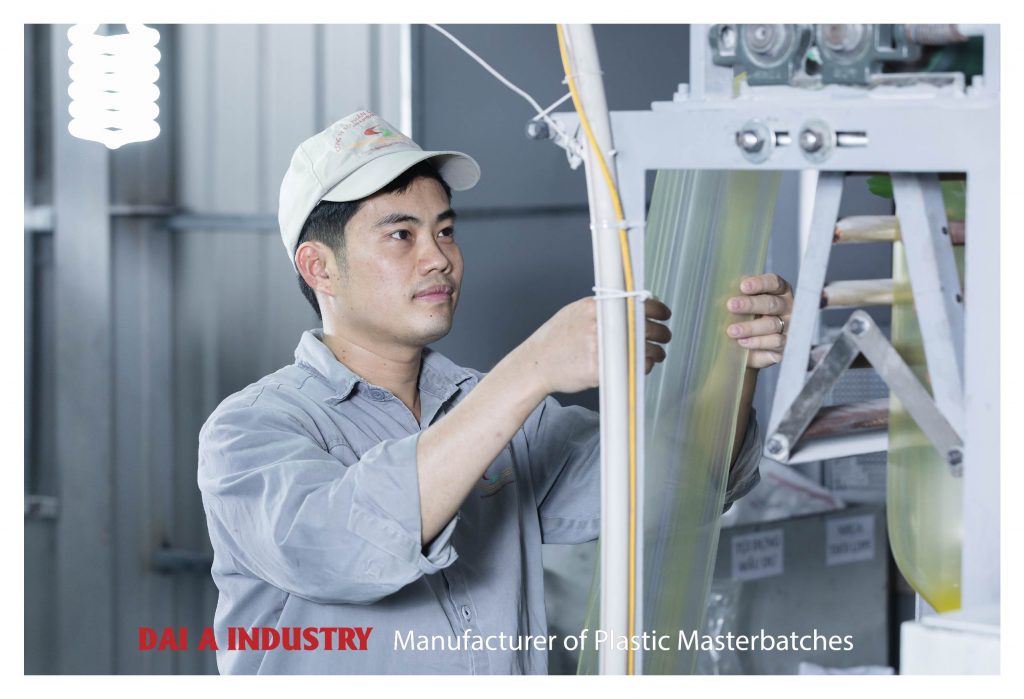Blocking in blown film (film adhesion) is a common problem encountered by many manufacturers, which not only affects products’ quality, but also reduces production efficiency. So what is the main cause of this phenomenon and how to deal with it? Let’s find out in this article.
1. Blocking in blown film: What is it?
Blocking in blown film is the adhesion of two adjacent layers of film. It is most frequently seen in polyethylene and polypropylene and films processing (either blown or cast), and to a lesser extent in extrusion coated or laminated products.

2. How to measure blocking in blown film?
Measuring the tendency blocking in blown film allows manufacturers to provide timely solutions to minimize the negative impacts on end-products. There are various test methods for measuring the tendency of a film to block.
In production, a very simple manual test is often carried out in which two layers of a film are placed on top of each other and moved between thumb and index finger or separated from each other.
Also, it can be estimated using a standardized scientific method (ASTM D-3354-89). The force required to separate two films is measured. The individual layers of the foil are each applied to an aluminium block, one of the blocks being attached to the base of the apparatus and the other block (weight-compensated) being mounted on a balance arm. On the opposite side of the scale arm, weights can be applied to increase the force until the layers of film separate.
3. What causes blocking in blown film?
Blocking in blown film can be resulted from various parameters. Here are top factors that can lead to this problem.
3.1. Thermodynamic parameters (temperature, cooling capacity)
– Thermodynamic process control of cooling is decisive (coolant temperatures, volume flows)
– Reaching a special critical temperature level before winding (depending on the material)
– For thicker films, it is not the surface temperature that is decisive, but the core temperature (since the heat on the roll migrates from the inside to the outside and can then lead to blocking)
– Inline drying times are not observed, are uncontrolled or incorrectly parameterised
– Automated adaptation of cooling process parameters for different processes, products, hall temperatures or other environmental influences can often increase the productivity of a plant and keep its quality robustly high
– Computer simulations provide insight into the process
3.2. Mechanical parameters (contact force, tension)
– Winding tension is too high
Tension levels can easily be overlooked unless they are so great the core is crushed, making it impossible for the operator to remove the roll from the winder shaft. If the core is crushed only slightly, the operator may be able to remove the core from the shaft, but you may then find it impossible to remount it on a let-off stand. Just as bad a problem can arise if the winding tension is too low, blocking will not occur, but the film may telescope out from one end of the roll, making the film impossible to convert.
– Winding tension is not adjusted with increasing winding diameter, but is constant
– Contact force of pressure rollers is too high
3.3. Technical material parameters
– Non-optimal proportion of anti-blocking agents
– Inappropriate type of anti-blocking agent
If the additive levels are designed for a 4-mil film and you are producing a 1- mil film, not enough slip and anti-block additives are present to prevent blocking in blown film from occurring.
– Lubricant migration takes place
– Incorrect binder (printing)
– High residual solvent content (printing)
– Unsuitable compound
3.4. Machine
– Setpoints are not exactly maintained
– Control behaviour leads to overshooting or undershooting
– Defective, incorrectly parameterized or scaled sensor values
– Lack of positioning accuracy
3.5. Management
– Lack of knowledge about the influence of the machine operator
– Lack of time for process optimization
– Lack of time for quality monitoring
– Lack of internal training
4. Anti-blocking additive – effective solution to blocking in blown film
Anti-blocking additives are substances added in blown film manufacturing process to prevent the adhesion between film layers. By creating micro-rough surfaces, they can lessen the bond between film layers and minimize the tendency of the blocking in blown film. The effectiveness of anti-blocks is determined by two factors: the number of particles of anti-block at the film surface and the size of the anti-block particles. Proper selection of additive type somehow depends on the thickness of the film.

After 9 years of development, Dai A has demonstrated its strong position in the plastic material market. We take pride in providing customers with the highest quality additives including anti-blocks. Thanks to outstanding advantages, anti-blocking additives are widely used in various applications. Most importantly, our additives are tailor made based on your requirements, making them the right fit for your products.
We will regularly update the latest information on Dai A’s information channels:
>Link Linkedin: https://www.linkedin.com/company/67721636/admin/
>Link Facebook: https://www.facebook.com/daiaindustry
